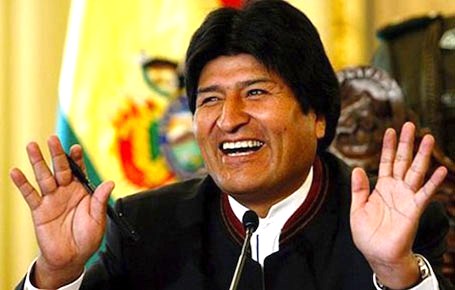What’s at the root of silver’s volatile ride in 2011? We can’t blame it on the Hunt brothers so let’s blame it on China. On April 25th, as silver approached record highs, Bloomberg reported that China will buy precious metals to diversify its foreign-exchange reserves. Whats more the country, with more than $3 trillion in reserves, plans to set up new funds to invest in energy and precious metals. Then the bubble popped. Or did it?
The Shanghai Exchange elected to adjust the daily trading limits and margins associated with silver trading four times over two weeks to control speculation. Shi Heqing, silver analyst at Beijing Antaike Information Development, remarked, “Chinese investors have piled into silver as one of the investment choices to hedge against rising inflation,” and that, “The government’s move to increase margins in an effort to curb volatility won’t affect buying interest in physical material”.
Silver is clearly susceptible to quick peaks and plunges. The silver market is smaller than many other commodities markets which, historically, has scared off larger investors who help control market fluctuations. Gold, by comparison, has nearly four times the amount of tradable futures contracts as silver. According to GFMS Ltd., a London-based metals consultancy, the value of new gold supply last year was $217 billion, with 17% of the total supply held by the world’s central banks and multinational financial institutions. In contrast, the new supply of silver amounted to $49 billion in 2010, and less than 5% of silver is held by central banks and institutions.
Lou Forte, a 35-year-old day trader from Westchester County, N.Y, who was interviewed by the Wall Street Journal may have distilled today’s silver market best when he said “The volatility is enough to make you vomit.”
6. Silvercorp Metals Inc. (TSX:SVM)
If you like China and you like silver then you will probably like Silvercorp Metals. With three projects in China and one in British Columbia, Silvercorp is the largest Canadian listed primary silver producer operating in China and the self-proclaimed lowest cost producer of silver among its industry peers. In the fourth quarter of fiscal year end 2011 which ended Mar. 31, 2011, the company reportedly produced silver at a cash cost of negative $7.61 (factoring in by-product credits) and earned $12.6 million, or $0.07 per share, on sales of $42.4 million which was a 50% increase from the same quarter last year.
Financially, the company appears to be in good shape. The benefits of rising metal’s prices have yielded US$206 million in cash against no long-term debt. With the money, Silvercorp intends to grow its resource base through continuous exploration of existing projects as well as seeking to acquire new development projects in multiple jurisdictions.
Some analysts like the company, on January 18th, 2011 BMO Capital Markets issued a $15.00 target on the stock giving Silvercorp a rating of outperform. While others are not as bullish. On May 13th, 2011, CIBC cut their price target for Silvercorp to $14.00 from $14.50; rating the stock as a sector underperformer. Silvercorp is currently trading just under $11.00 per share.
7. South American Silver Corp. (TSX:SAC)

- Juan Evo Morales Ayma, once a poor working class farmer, became President of Bolivia on December 18th, 2005.
Evo Morales, of indigenous Aymara descent, was born in Isallawi village in the province of Oruro, Bolivia. He was one of seven children born into a poor family; only Morales and two of his siblings survived past childhood. He grew up in an adobe house with a straw roof that was three by four meters.
As a child, he traveled with his father to Argentina to work in the sugar cane harvest. As a youth, he accompanied his father in herding llamas from Oruro to the province of Independencia. At the age of 46 he became the President of Bolivia in 2005 receiving 53.7% of the popular vote.
Morales is a nationalist. During his first term in office, he improved the living standards of poor Bolivians through increased state intervention of the economy by nationalizing oil, mines, gas, and communications. Welfare provisions and old-age pensions were expanded and payments were made to mothers provided their babies are taken for health checks and that their children attend school. Evo Morales is a charismatic leader and although he continues to align himself with other Latin American socialist leaders, he has gained a reputation for being responsible towards foreign business investment. Morales’ decree, “We want partners, not bosses.” And has previously stated that, “The investor has the right to recuperate their investment and to a reasonable profit.”
Earlier this month, Evo Morales overturned certain mining, banking and investment laws in another bid to increase state control over the Bolivean economy. A new mining bill, which has yet to be sent to Congress, isn’t expected to “substantially” change contract conditions for miners.
South American Silver’s flagship project is the Malku Khota silver-indium-gallium project in Bolivia, one of the world’s largest undeveloped silver, indium and gallium deposits. On May 16th, the company updated its economic assessment and resource estimate to expand Measured and Indicated resources 60% to 230 million ounces of silver with an additional Inferred resource of 140 million ounces of silver. In addition to Malku Khota, South American Silver is also developing the Escalones copper-gold project in Chile and we joined up with the company’s President & CEO Greg Johnson to learn more about their projects and the rare element indium – CLICK HERE – for the interview.
For 10 Most Interesting Silver Stocks – Part 4 – CLICK HERE.



 Follow us on Twitter
Follow us on Twitter Become our facebook fan
Become our facebook fan










Comments are closed.